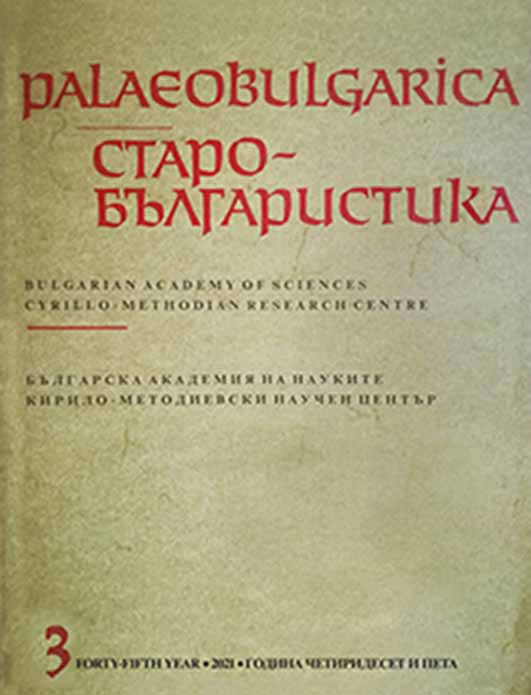Още веднъж за бератския реликварий
Once Again on the Berat Reliquary
Author(s): Evgeni ZashevSubject(s): Language studies, Language and Literature Studies
Published by: Кирило-Методиевски научен център при Българска академия на науките
Keywords: Berat reliquary; Berat service; St. Gorazd; St. Angelar; the Seven Saints.
Summary/Abstract: The present article discusses the reliquary of the Dormition Cathedral in the city of Berat’s acropolis (Albania). This church allegedly contains the relics of Sts. Gorazd and Angelar and even the relics of the Seven Saints as a group. The purpose of this paper is to summarize known data about the reliquary, but not retroactively with regard to its authenticity. Rather, the data are analyzed in perspective with reference to the origin and establishment of the cult of the Seven Saints. This study traces the scholarly discussion about the authenticity of the relics from the second half of the 19th century until the present. Although I take into consideration the real possibility of these relics to be fake, as a medievalist, I point out that such an assertion is not productive as to the emergence of the cult of the Seven Saints. I argue that before the end of the 17th century relics considered to belong to Sts. Gorazd and Angelar, along with other church property, had been moved from Glavinitsa (Ballshi/Ballsh) to the St. George monastery in the Breshtan settlement. From there, looking for extra safety, the relics had been moved to the metropolitan Dormition Cathedral of Berat. These relics generated the local cult of the Seven Saints developments, whereas their presence in Berat or their move to Berat per se became the reason for the creation of the so-called Berat (or Venice) Seven Saints Service. The feast day was commemorated on November 26, right after the feast day of St. Clement of Ohrid. Both holidays had been parts of a common festive event. The November 26 commemoration was preserved for more than a century and a half as a specific local tradition despite a second date, July 17, found in the Moschopolis Seven Saints Service of 1742. Along with the Berat Service, the relics serve as the basis of a wide-spread common iconographic design for the representation of the Seven Saints in the city of Berat and its vicinity. In 1885, under the patronage of the local bishop Anthimos Alexoudis, the relics were placed into a specially designed reliquary. This silver-plated reliquary has a relief image of the Seven Saints and several inscriptions. The differences between the names of the Seven Saints can be attributed to both types of traditions: the oral tradition, which can be seen on the reliquary inscription, and the written tradition whose continuation is evident in the service. Today, the reliquary silver decoration is missing, although the reliquary has been preserved and it is kept in the Dormition Cathedral, which since 1986 has been transformed into the Onufri National Iconographic Museum. The reliquary’s relics and metallic shoes provide sufficient basis for the assumption that they had belonged to one and the same saint, whose identification is a task that remains for future research. The relics kept in the Berat reliquary are the basis for the modern Seven Saints cult whose Berat origin has a high degree of certainty. Having emerged at the end of the 17th or the beginning of the 18th century in the multiethnic environment of the city of Berat, this cult has been represented by a rich iconographic tradition and a service associated with Southern Albania.
Journal: PALAEOBULGARICA / СТАРОБЪЛГАРИСТИКА
- Issue Year: 2021
- Issue No: 3
- Page Range: 3-32
- Page Count: 30
- Language: Bulgarian
- Content File-PDF

